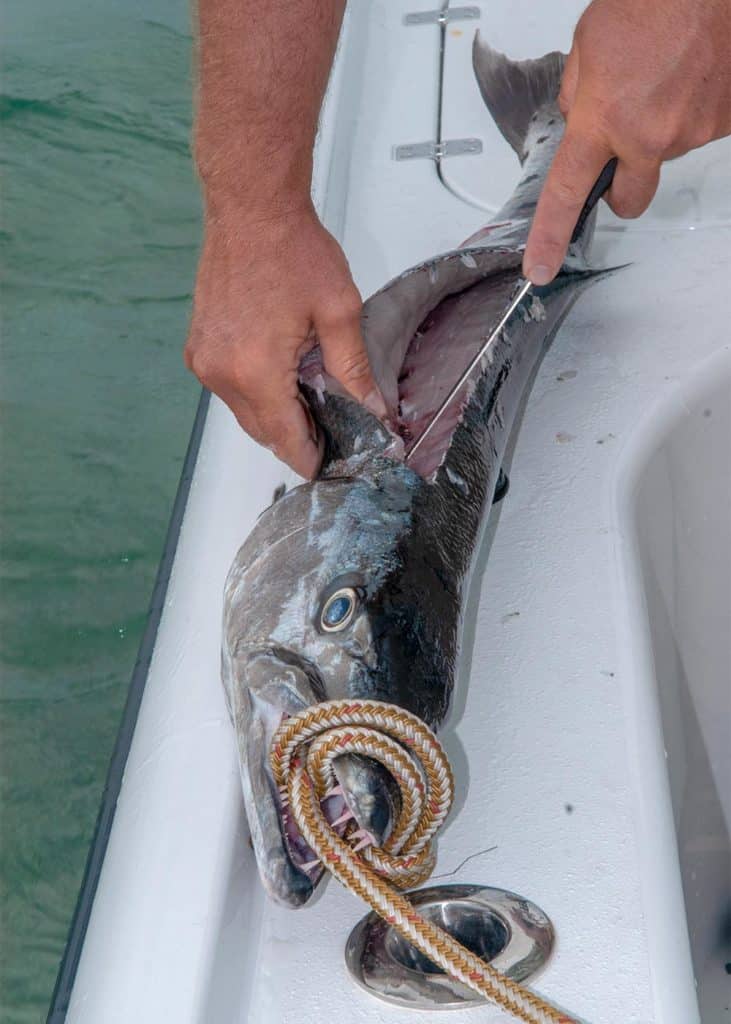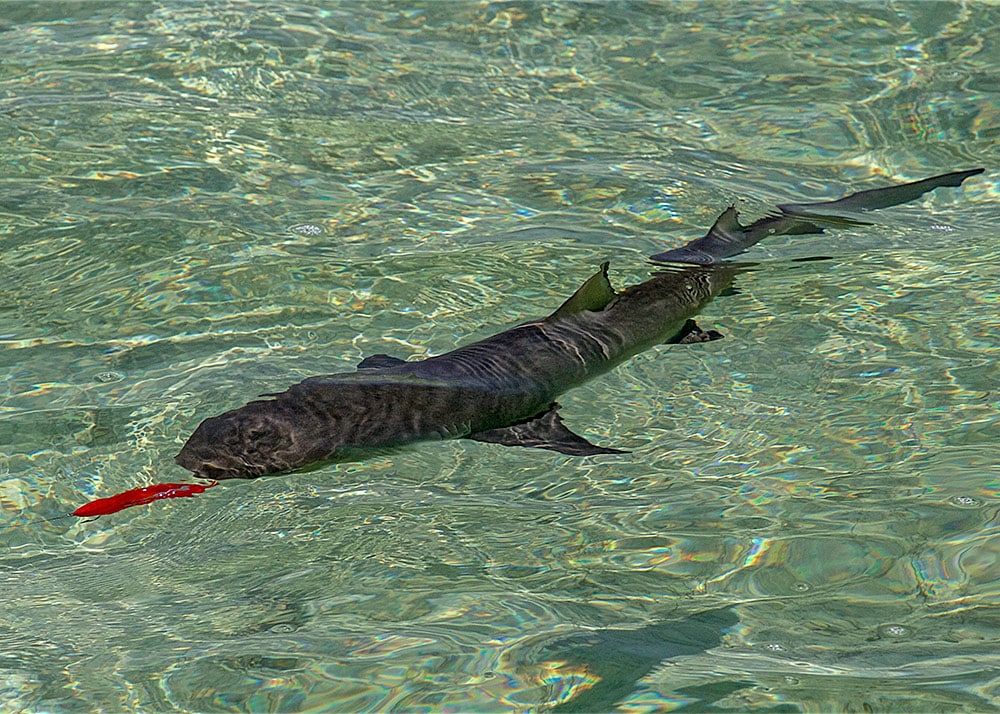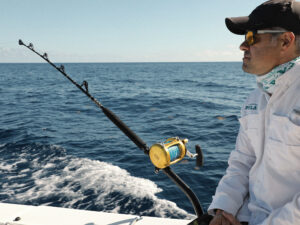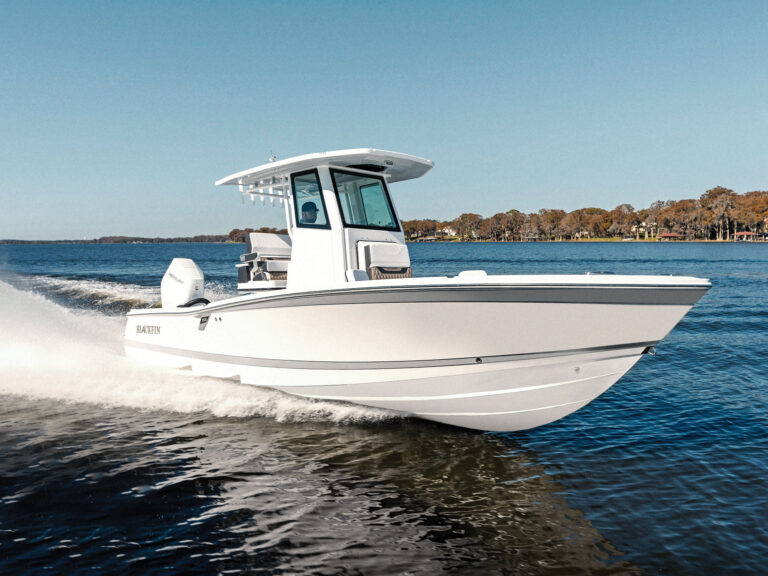
Saltwater fly fishing sometimes calls for additional efforts to draw fish into casting range — from surrounding waters or up from the depths — and sometimes also make them hungry or excited enough to eagerly take a fly.
That’s where chumming comes in.
Chumming is done in many ways and it works wonders in many fisheries, including sight-fishing on the flats. Some fly fishers, purists by nature, eschew chumming as strongly as they do bait fishing. But if you can get past that hangup, chumming sure can save your day in many situations.

Having grown up in Miami, I cut my fly-fishing teeth on fertile Biscayne Bay, where I focused primarily on catching bonefish on fly. I waded a lot, and fished from my poling skiff when and where wading wasn’t possible. In tough conditions: periods of poor visibility, or water temperatures too cold or hot, I chummed both for my own success and, later, for that of my charter customers.
Biscayne Bay fish were less educated decades ago, when boat traffic and fishing pressure were still relatively light. But nowadays, Biscayne’s big bones are far more challenging, so chumming is often required to improve your odds. It actually serves two purpose here, it brings bones (and permit) within casting range from your boat, be it staked-out or anchored, and also fires up the fish, making them more likely to accept whatever you offer them.

The late Capt. Bill Curtis, a South Florida flats-fishing eminence, chummed up zillions of bonefish for his anglers, staking out Grasshopper, his Hewes Bonefisher, on oceanside flats spanning from the tip of Key Biscayne south to the Upper Keys. He preferred the narrower, east-to-west oriented flats (I call them toothpick flats) with a strong current and bottom comprising some turtlegrass and plenty of bare, white sand, over which even inexperienced eyes can pick up fish in less than ideal sunlight.
Curtis chummed with fresh shrimp, diced with a knife rather than crushed or pulled apart, and swore that broadcasting the shrimp bits over a large swath put out a wider, more effective scent trail than a bunch of shrimp packed in a chum tube, chum cage or weighted mesh bag sitting in one spot. In case the flat he fished was lousy with pinfish, needlefish, puffers and other small critters happy to scarf up every bit of dispersed chum, Curtis carried lots of shrimp.

Hard to beat fresh shrimp to chum up bonefish, but there are other excellent options. For instance, crushed claws or body meat from blue crab, which are particularly effective when permit are also a possibility.
Bill Curtis was right about the wider scent trail, but the chum tube gets my nod. Otherwise, you better have plenty of shrimp on hand to last all day.

While Curtis traditionally used a simple, attractor pattern he concocted: the Blue Tail Fly, a flashy yellow-and-blue number with bead-chain eyes for weight, chummed up bones are usually hard-charging fish that will take any of the great shrimp fly patterns available, like Borski’s Bonefish Slider or Fur Shrimp. Yet sometimes, a basic Clouser Minnow is as good as anything.

In winter, big barracuda move onto the shallows and can be taken on fly on most oceanside flats from Miami to Key West and beyond. Though you can sight cast to them while a friend or guide poles the boat, big ‘cudas, wise and sharp-eyed, are wary of hull slap and approaching boats. A good solution is to stake out at the dropoff of a flat where current is strong, and place filleted, fresh mullet in a mesh bag. Tossing out a few liveys, such as pilchards, are the icing on the cake for cudas, quickly getting the fish primed for feeding both on the flats and over shallow wrecks. Once fired up, barracuda will strike fly patterns such as Deceivers, Needlefish imitations, and poppers.

For sharks on the flats — primarily blacktips and lemons in the 30- to 150-pound class — barracuda make the best chum. The traditional means is to “butterfly” a medium-size cuda, or two or three small ones, clip them to a rope, and dangle them overboard. Fresh-caught ladyfish work as well, and are normally a snap to catch on jigs beforehand in Florida Bay channels between flats.

Shark chumming is practiced by fly fishing guides throughout Florida Bay. Sharks homing in on the scent will take a colorful (red-and-orange is particularly effective), bushy streamer fashioned from webby saddle hackles for the tail and palmered hackles of marabou for the head. The fly has to be cast close, stripping it right past the shark’s eye to be noticed. Bonnetheads, considerably smaller than other sharks patrolling the shallows, can be enticed by chumming with fresh shrimp in a chum tube, and then targeted with fly patterns more frequently reserved for redfish.

Another species that responds well to chum is pompano. They’re primarily considered surf fish, but an occasional school is sighted on the mud flats in Florida Bay, around Flamingo, and many commonly move into Florida coastal bays from the Panhandle to Sarasota Bay on the Gulf coast, and the Intracoastal Waterway flats of the entire length of the Indian River Lagoon. From Stuart to Vero Beach, where I target them these days, they venture onto very shallow water, over shoals and shoreline grassy coves, to feed. Similar to permit, they like to feed over shell or sand bottom, and especially “salt-and-pepper” flats, the kind with lots of grass patches mixed in.
Pompano eat small clams, crabs, grass shrimp and even small baitfish, but can be skittish when boats invade their space in the shallowest water, where waders can stalk them like bonefish. I catch plenty from my skiff by blind-casting flies, or sight-casting to singles or small schools I spot, but nothing increases the catch rate like chumming. They come to the chum like vultures, and will sometimes grab your fly right at the boat. I typically chum after I spot some or catch one first.

I employ my Power-pole or an anchor to keep my boat along the edges of sandy shoals where some shell, rocky or grassy patches are present, and use fresh shrimp, sand fleas, or clam meat to draw the pompano in. Rather than scatter them, I place the pieces in a chum bag or chum tube — like I do for bonefish — to prevent small fish from stealing all the chum. I give a spot about 10 minutes to produce when the current is strong. Pompano have a great sense of smell, and I have spotted their wakes on the surface coming into my chum scent from 200 feet away or more! I’ve also had fish attracted by the chum strike my fly within 20 feet of the boat without a speck of fear.

In the Indian River Lagoon, sheepshead, bluefish and Spanish mackerel have sometimes joined the pompano in my chum line. But if you’re specifically targeting the last two, frozen chum (either blood and ground fish parts, or glass minnows) often works better. And spicing things up by tossing a few live pilchards in the water now and then, can take bluefish and mackerel action to a whole new level.









